Entering the Boros residence surpasses any archetypal ‘home visit’ one might expect. As a former Nazi air raid shelter erected in 1942 in central Berlin, it is a home like no other. Its heavy open doors welcome visitors down a series of interconnected bare concrete corridors. Bullet holes from the Second World War bear witness to the historical significance of the building, contributing to its singularity. This structure exposes a not so distant history while simultaneously embracing the future.
In the heart of this hermetic cube is an exhibition of contemporary artworks from the private collection of ad agency founder and publisher, Christian Boros, and his wife, Karen. In order to create a suitable space for the collection, architect Jens Casper drastically deconstructed the 3,000 square meter bunker, transforming it into a complex room arrangement. Once devoid of natural light, the penthouse is now a glass superstructure.
Here, Christian and Karen live with their son amidst concrete walls with paintings by artists such as Elizabeth Peyton, and a series of installations by Olafur Eliasson. It is a finished project that once seemed to be impossible to realize. Their home is now an art manifesto for Berlin’s historical Mitte district: where modification and diversity are the norm. As patrons of the arts, Christian and Karen actively engage in the city’s artistic evolution.
This portrait is part of our ongoing collaboration with ZEIT Online who present a special curation of our pictures on their site.






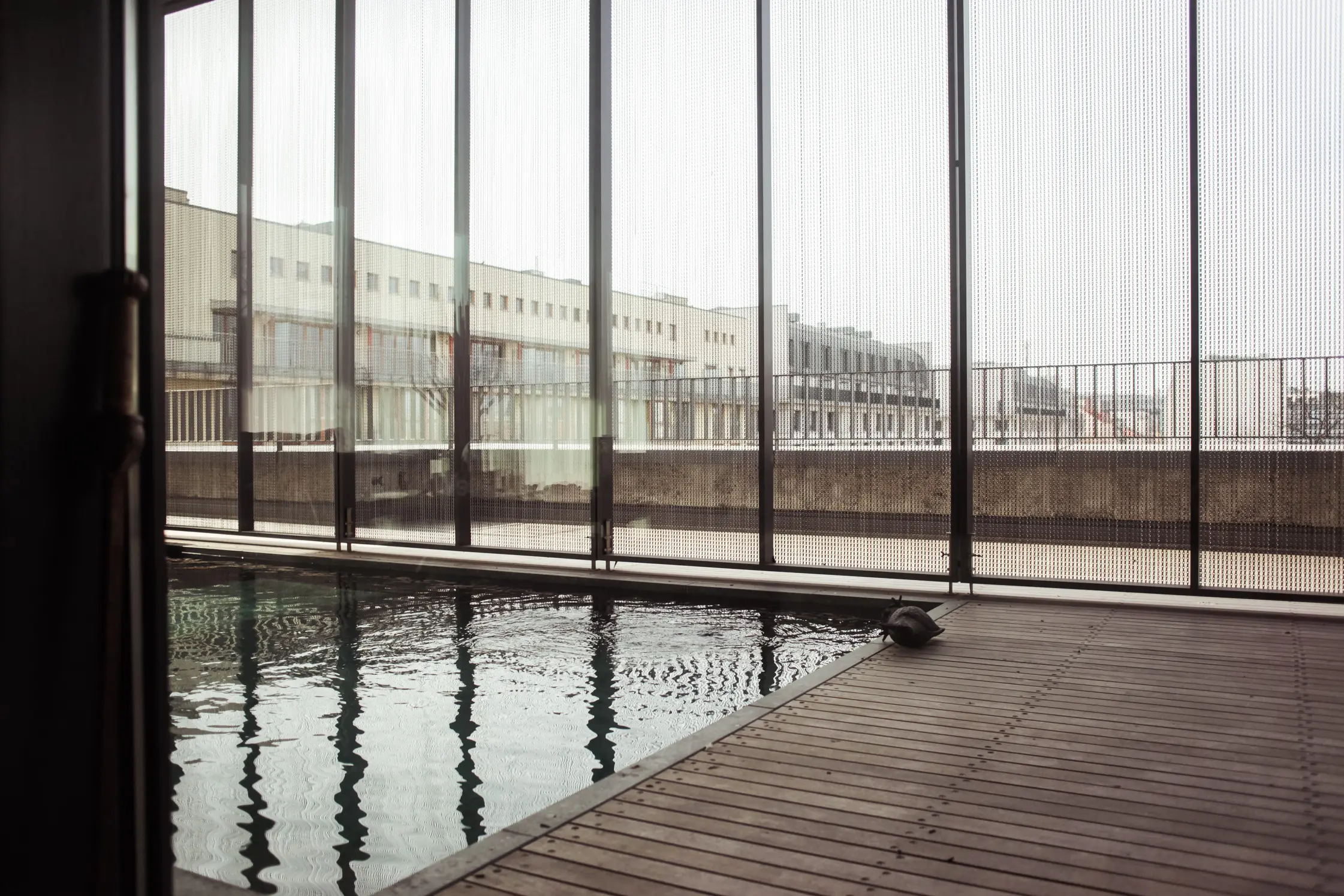



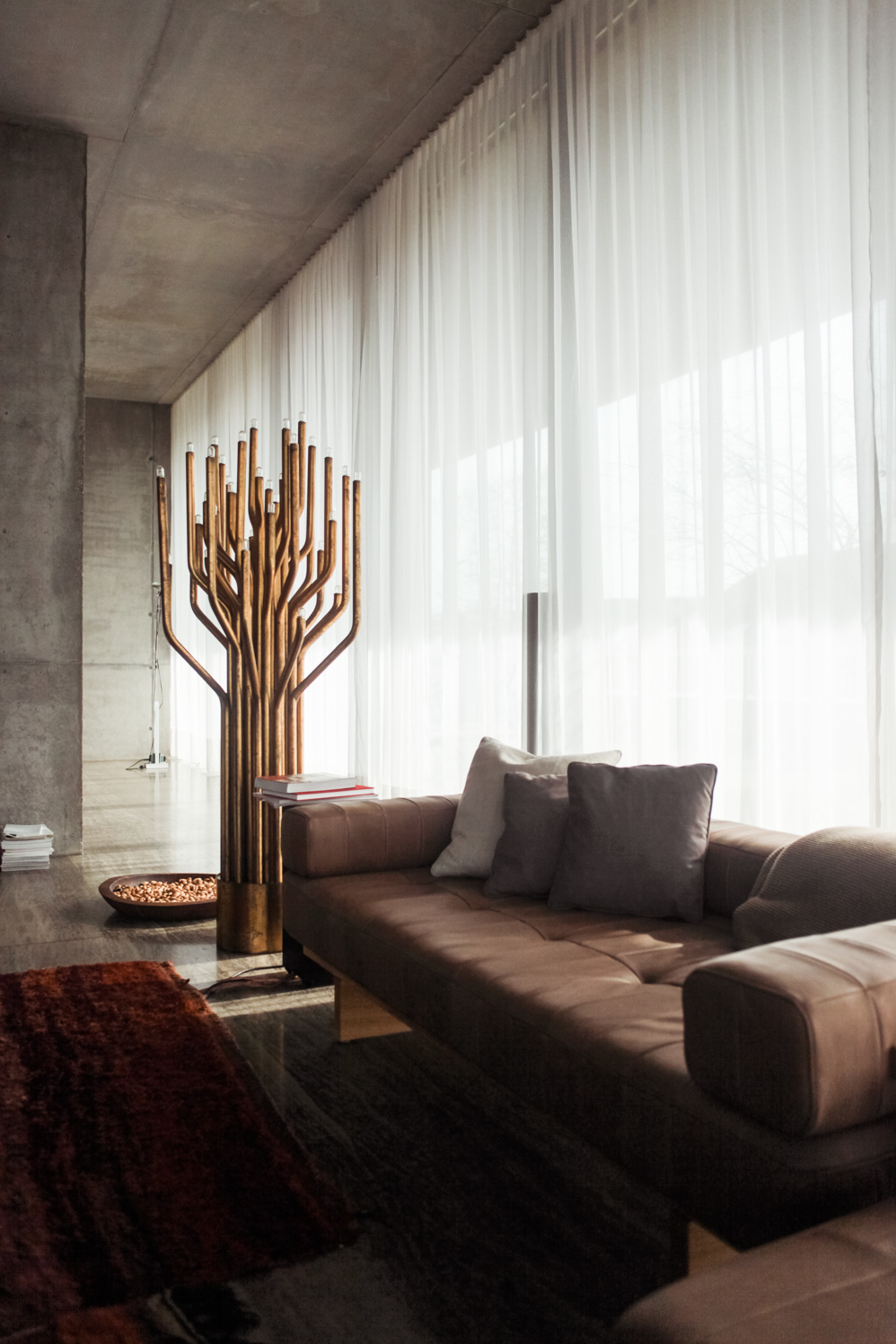
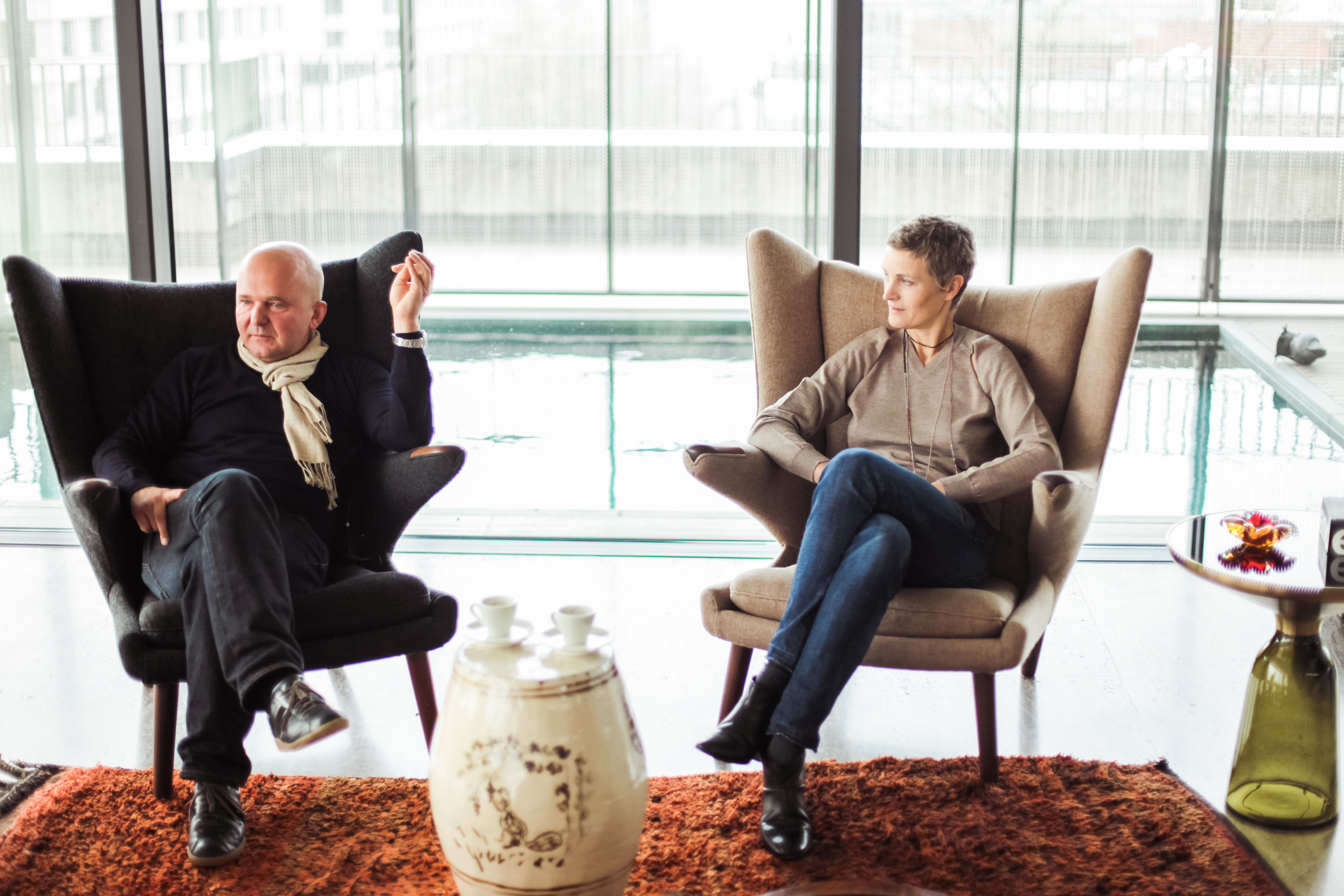










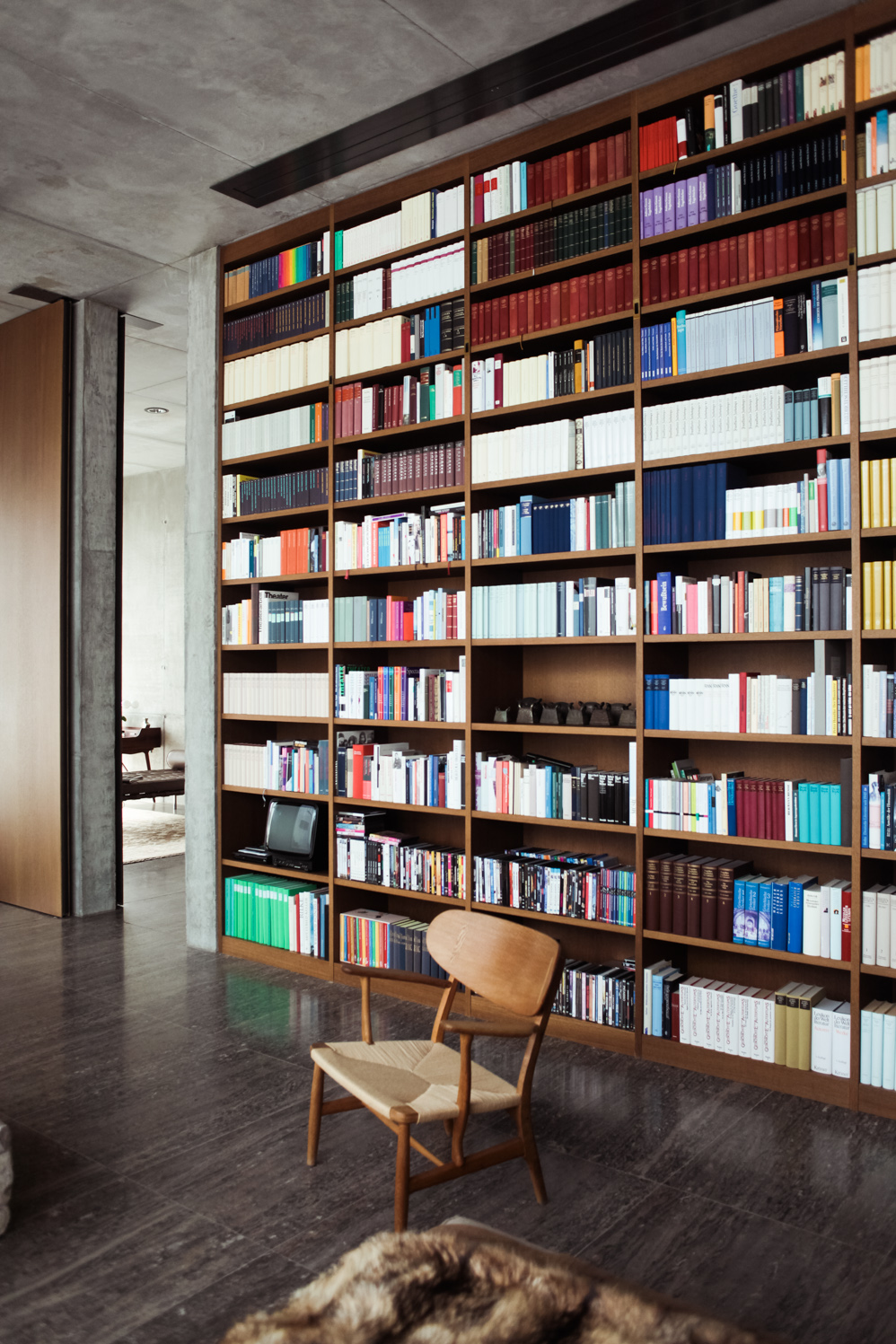
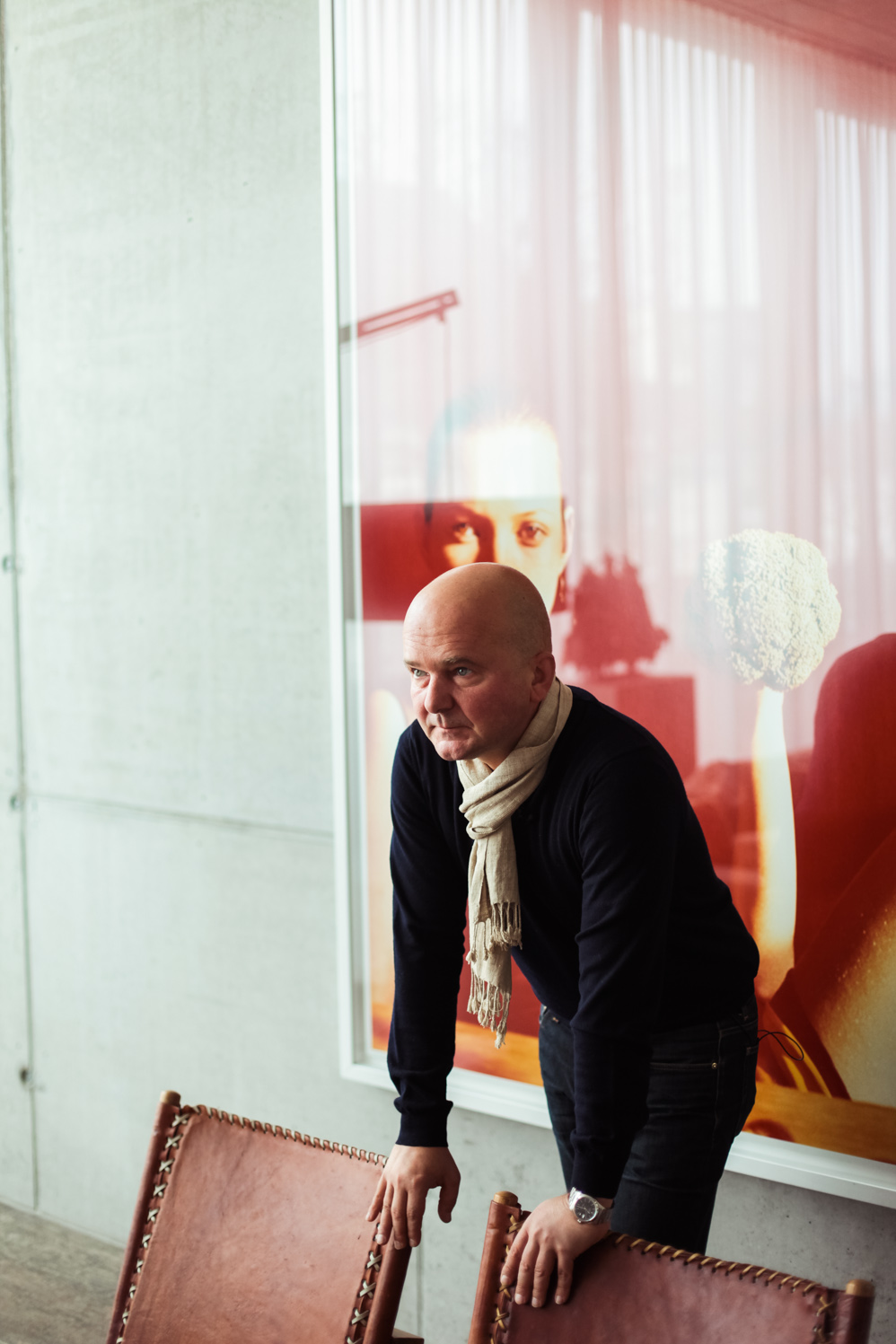

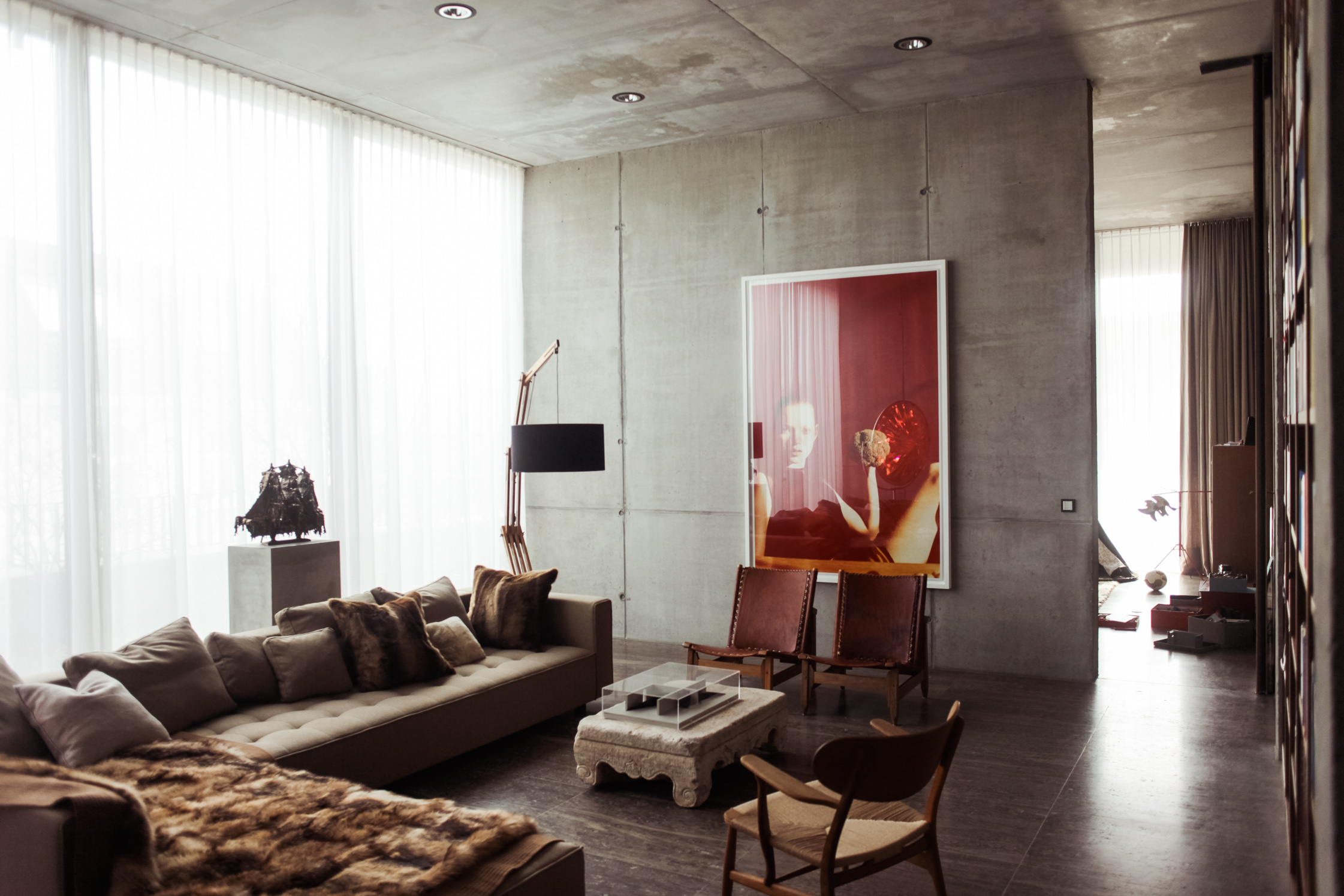





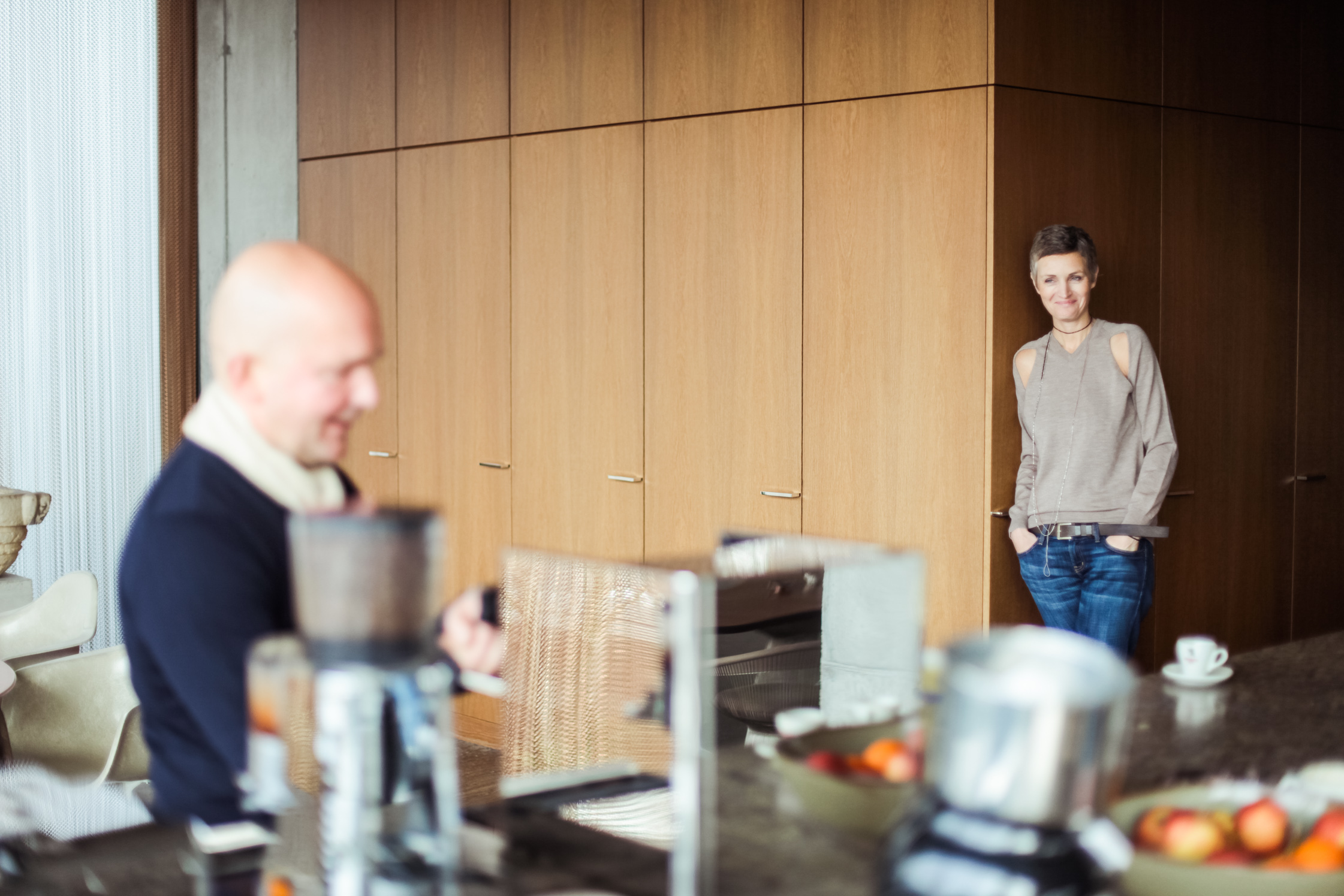


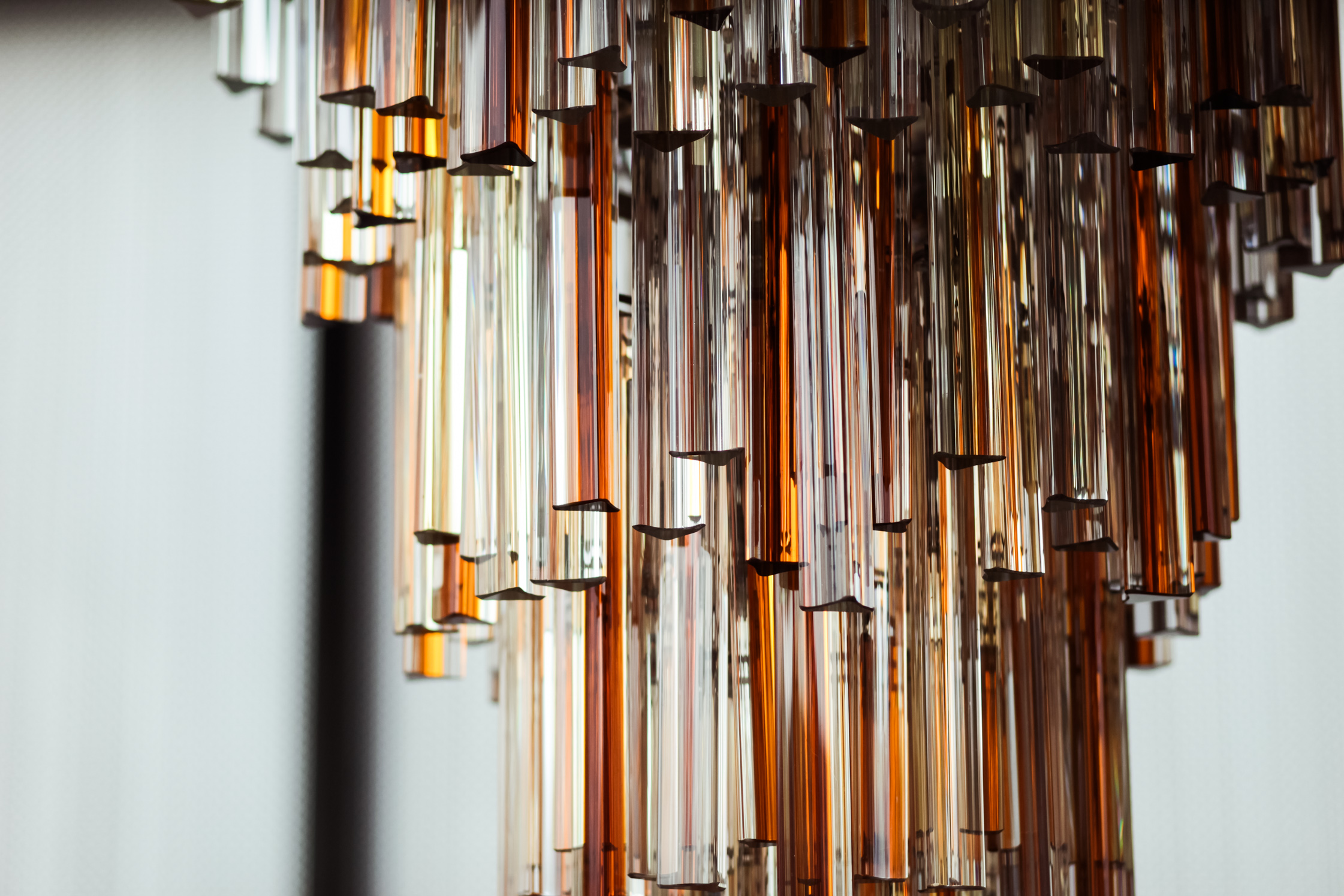


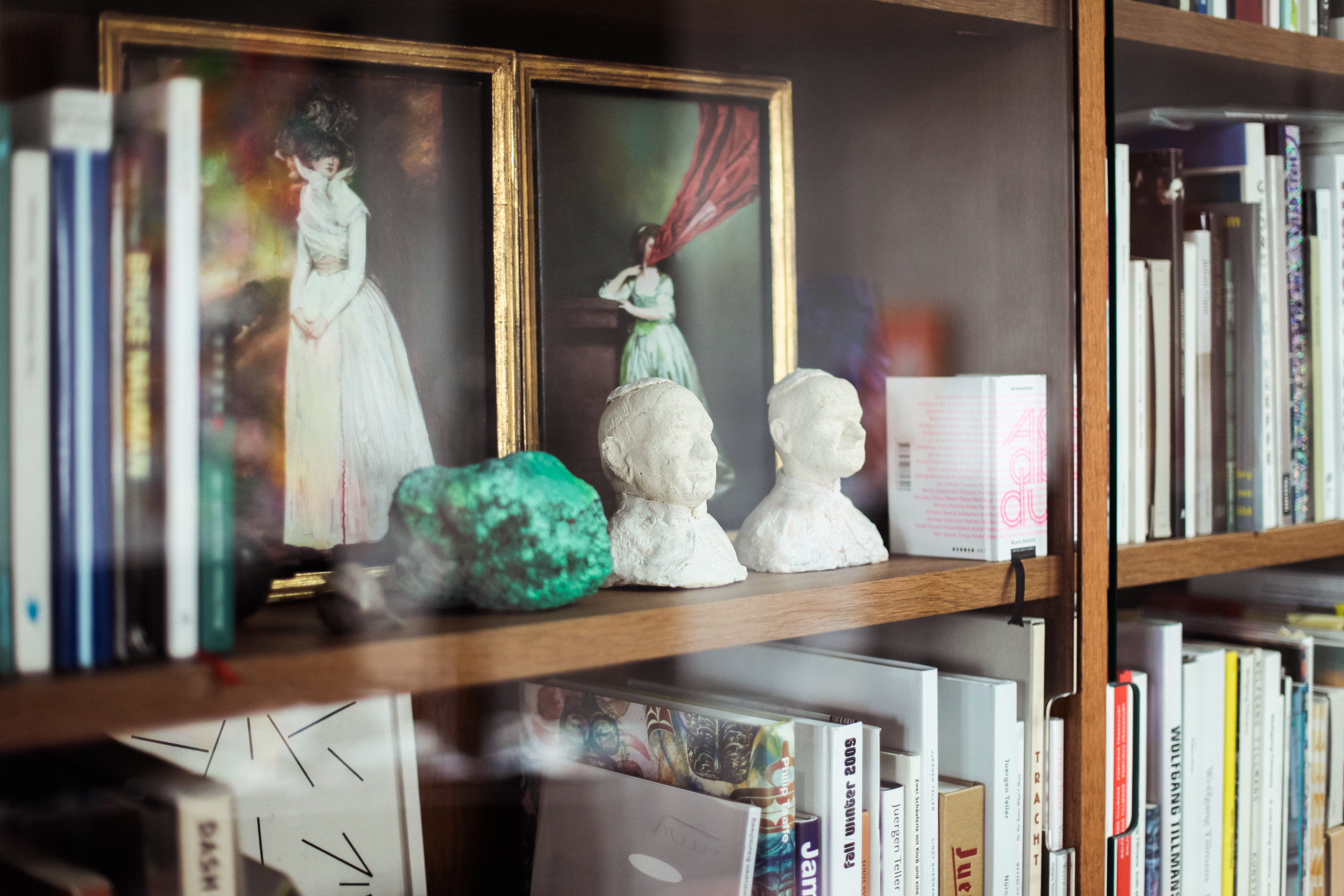




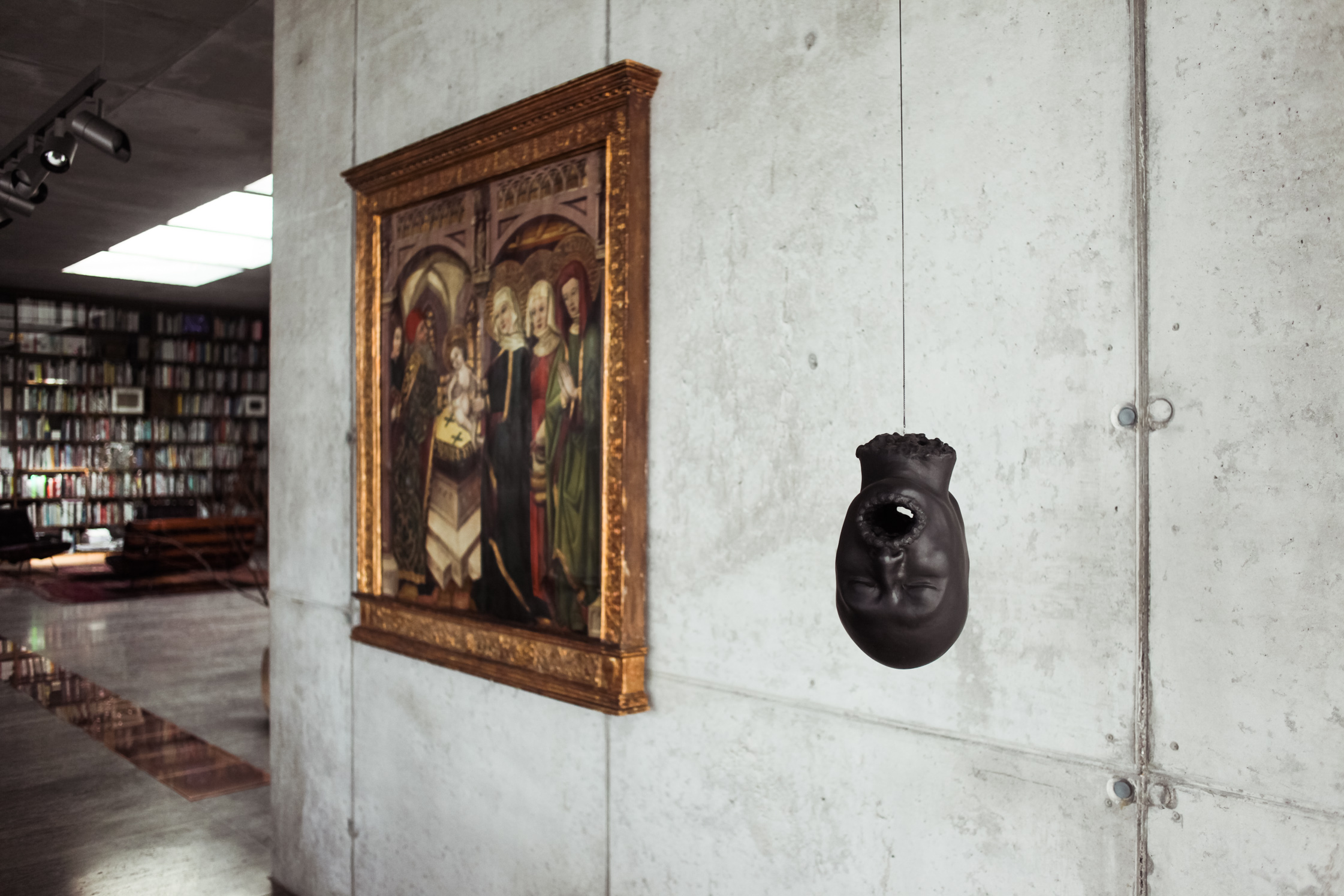
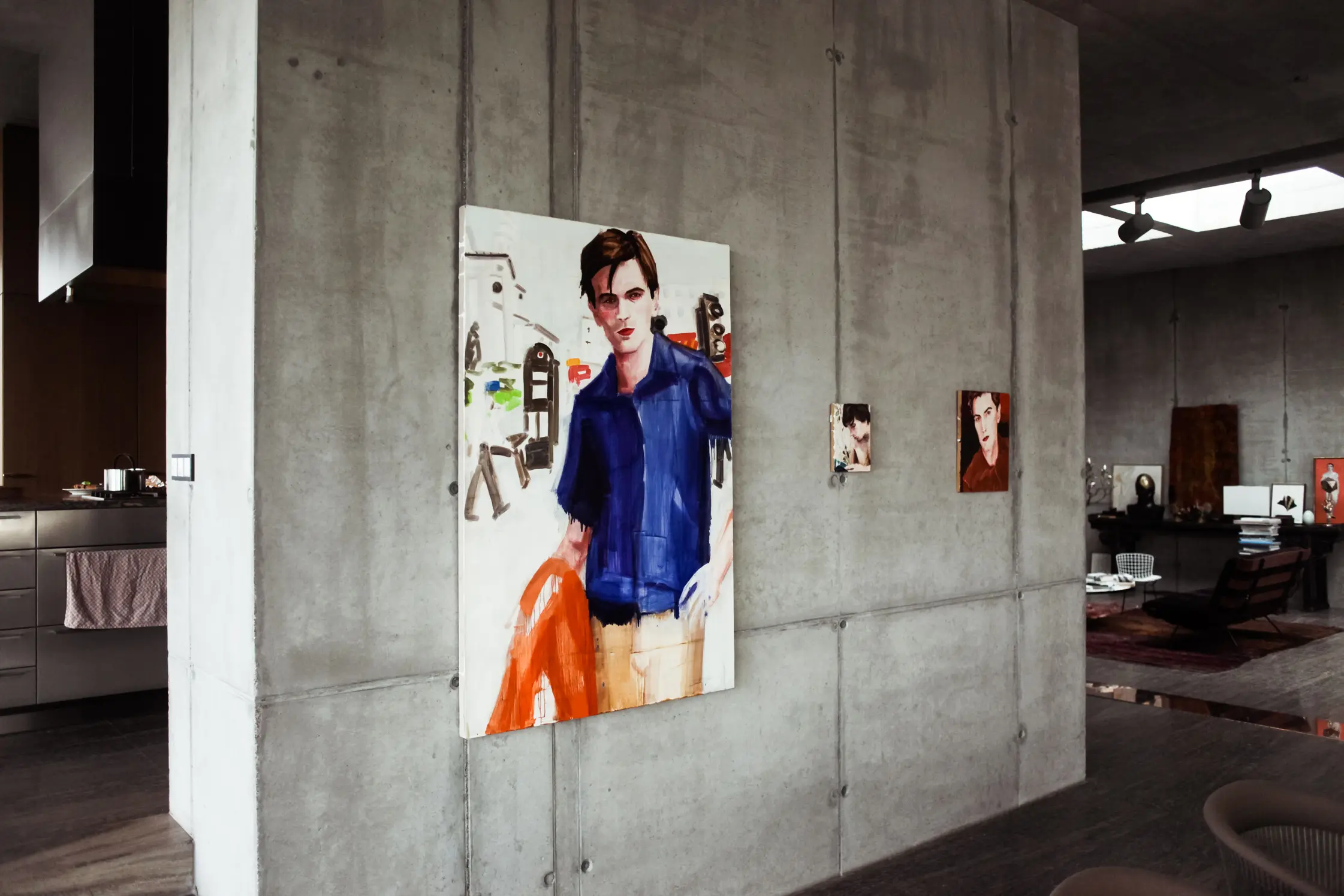




What is it like for your son to live among all these artworks? How much does he actually acknowledge them?
Karen Boros: He has great respect for them, especially for the big canvases and the ones that hang around here. It is a natural situation for him.
What can one find in the penthouse and downstairs in the exhibition?
Christian Boros: For example, we have a sculpture from the eighth century or a picture stemming from the fifteenth century here. These are objects that wouldn’t fit in a contemporary exhibition. In the bunker there are things that are important to us privately. Many of those objects are from our travels. Only a small fraction of the whole collection is shown in the exhibition space. The rest is located in a big storage.
When does the collection change?
Christian Boros: We completely exchanged the collection in the bunker in September 2012.
Karen Boros: We generally first choose the artists we would like show and then find an according room for them.
Your alternatives in finding a location other than the bunker were speculated about quite a lot. What were they?
Christian Boros: We were also looking at a hospital, a swimming pool, or a school. Buildings that had a different function previously.
And why the bunker?
Christian Boros: It was the most impossible. I am always magically drawn to problems. One can perhaps not solve problems, but one is able to exchange problems with other problems.
The bunker is probably the most historical place: what is it like to live in a penthouse on top of an ex-nazi monument? Is the history still present?
Christian Boros: I still have not fully arrived. I take a look at the building and still cannot believe that I live there. The structure is so bulky and not easy to digest.
Karen Boros: It is impossible to forget the past when one lives in such a monstrous construction that breathes its inevitable severity.
Were you immediately convinced by Christian’s idea to move here?
Karen Boros: Yes, we both were hoping for it to work out right after the viewing.
Christian Boros: There are many couples in which a partner serves a corrective function. We radicalise each other completely in that sense.
Does the same happen when you discuss new purchases at galleries or fairs?
Christian Boros: It took us a long time to find each other. However, the preferences in regards to art remain the same.
Karen Boros: It is certainly true that we evaluate artists and their work differently.
Christian Boros: Karen enjoys video art, something I am not really crazy about.
Which artist do you own the most work by?
Christian Boros: We own the most works by Wolfgang Tillmans and Elizabeth Peyton.
Karen Boros: We also own a lot of works by Olafur Eliasson.
How do you define the border between favor and personal interest, and a purchase between a painting or an installation?
Christian Boros: We often buy pieces that are no exactly to our liking. Ones that are rather bulky and not as pleasing. We never buy immediately. I always try to sleep on it.
Karen Boros: Sometimes we discover an artist too late and the prices are already through the roof.
What is the most crucial part in your decision when buying art?
Christian Boros: The art we purchase doesn’t have a particular aesthetic. There is definitely an induction phase, for instance conversations with gallerists and artists. For us, there are no spontaneous moments.
You often attend museums and vernissages. How often do just visit a museum?
Christian Boros: Even though our collection is contemporary, I love going to museums. For instance visiting the Bode Museum on a Sunday.
Which epochs interest you?
Christian Boros: I enjoy the Renaissance.
Karen Boros: I am fascinated by Medieval times.
Which city promises the most interesting art market?
Christian Boros: The city we are living in, Berlin. We essentially know Berlin through art. This is why we came here from Wuppertal.
Outside of art, how do you like to spend your time?
Karen Boros: We love to take a walks in the countryside.
Christian Boros: And also conducting cooking contests.
From hobby to profession: more and more advertising agencies from Düsseldorf and Frankfurt are moving to Berlin. Christian, you opened an office in Berlin. When did you realize that this was something you wanted to do?
Christian Boros: We were always looking for good people in Wuppteral and I felt that I was giving them some sort of compensation instead of an actual salary. One is able to find the best people in Berlin.
Most of them being self-employed…
Christian Boros: Indeed. Few want to be tied down. In this respect we are building gangs. We bought an incredible house near Halleschen Ufer, intended for the agency.
What does the office focus on?
Christian Boros: We mainly work with people within the cultural sphere in Berlin. We are active in almost every German city museum, gallery and institution in Germany. These jobs are then processed in Berlin.
You have also worked for political institutions. There are plenty of those in Berlin.
Christian Boros: That’s true. We will also work a lot for ministries and organizations within the sphere of political communications. There are not as many clients from this industry in Berlin.
Do you think advertising still has an impact, or do you feel the consumer today is too ‘enlightened?’
Christian Boros: I have always wanted to work on advertisements. Since a young teenager I would prefer the ads than the actual film. In recent years I haven’t believed in advertising so to speak. Who does nowadays? Almost no client of ours is willing to do classical advertisement. This is why we develop books for clients, for example. Whatever is written in a book seems to be more believable to others.
What do you have to do in order to make an advertisement believable these days? Does it need to be daring or does it need to reveal subtlety?
Christian Boros: We started as a classical advertising agency; now we do communications. For one client we make a book, for the other an event, and for the third a blog. Ads and commercials are something from yesterday.
What does Wuppertal offer that Berlin can’t and vice versa?
Christian Boros: For me Wuppertal is a self-chosen diaspora, because I can actually concentrate on my work there. We are surrounded by so much green that I can easily stimulate thoughts by taking a walk. Of course the Rhineland is a region where many businesses are located in one small area. I drive my car to three clients in one day, something that would not be possible in Berlin. In Berlin, I always have to go to the airport first in order to visit a client.
What is the creative potential of that region? You are also a cluster manager for CREATIVE.NRW.
Christian Boros: Of course there are people who are radically creative within that region. Berlin possesses this sort of potential everywhere.
Would you like to support the federal government, or better yet the Bundestag’s committees with your specific expertise? For example, contributing to the formation of policies and not only in its implementation.
Christian Boros: I think the overall field of politics is quite interesting. I would like to be independently active within politics in the next ten years or so. The position as a culture secretary is very appealing to me.
Karen and Christian, many thanks for inviting us into your architecturally unique and historically rich home. To find out more about the Boros art collection see here.
This portrait is part of our ongoing collaboration with ZEIT Online who present a special curation of our pictures on their site. Have a look here.
Video by Christian Fussenegger and Maren Sextro
Pictures by Ailine Liefeld
Interview and Text by Julia Stelzner
